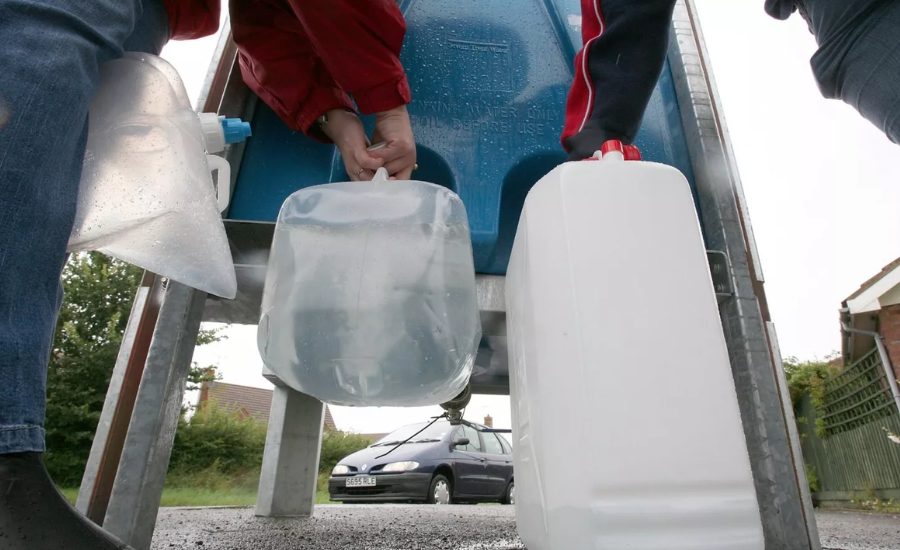The Environmental Protection Agency (EPA) has issued a strong recommendation for water utilities nationwide to enhance their cybersecurity protocols. This directive follows a concerning report revealing that approximately 70% of the water systems evaluated across the United States do not comply with the standards set by the Safe Drinking Water Act due to outdated cybersecurity measures.
Nationwide Drinking Water Alert
A nationwide alert regarding drinking water safety has been issued in the United States due to concerns over potential cyberattacks targeting water systems across the country. The Environmental Protection Agency (EPA) has revealed that many water facilities exhibit significant cybersecurity weaknesses, including outdated passwords and reliance on single-user logins. These vulnerabilities create openings for cyber threats that could disrupt water treatment processes, potentially leading to elevated chemical levels in the water supply.
Recent inspections by the EPA have found that a shocking 70% of U.S. water systems fail to meet the cybersecurity standards outlined in the Safe Drinking Water Act. The repercussions of such cyber threats can be severe. The most critical vulnerabilities include the use of default passwords and single-user access points, which are easily compromised. Cybercriminals could not only interrupt water treatment operations but also damage essential equipment like pumps and valves, potentially altering chemical levels to dangerous thresholds.
Such disruptions pose significant health risks to millions of Americans. The integrity of tap water, which many rely on for daily consumption, is now under threat. Given that a large portion of the population consumes tap water, it is crucial to address this issue with urgency. The U.S. government is taking proactive measures to ensure the safety and health of its citizens.
How To Safeguard Your Local Water System
To help protect your community’s water supply and ensure safe drinking water, consider the following steps:
- Stay Updated
Keep informed about local advisories and stay tuned to news reports regarding water safety. - Report Unusual Activity
If you observe any suspicious or unusual activity around water facilities, report it immediately to local authorities. - Advocate for Cybersecurity Improvements
Support stronger cybersecurity initiatives within your local water systems. This may involve advocating for regular software and hardware upgrades, enhanced password policies, and implementing multi-factor authentication. - Use Water Wisely
Practice mindful water usage by fixing leaks, using water-efficient appliances, and being conscious of your consumption to reduce pressure on local water systems. - Engage with Your Community
Join local water management meetings or community groups focused on water safety and conservation efforts. - Prepare for Emergencies
Have an emergency plan for potential water crises. This includes storing an adequate supply of water and knowing where to access safe drinking water if local sources are compromised.
By taking these proactive steps, you can contribute to the safety and reliability of your local water supply, ensuring that all community members have access to clean drinking water.
Potential Consequences Of Nationwide Drinking Water Alerts

The recent nationwide alerts regarding drinking water safety have raised significant concerns among Americans, highlighting several potential impacts. Below are key implications of these warnings:
- Increased Cyber Threats: If hackers gain access to water control systems, they can manipulate chemical levels in the water supply or disable water treatment operations entirely.
- Health Risks: Contaminated drinking water can lead to serious health issues, including gastrointestinal infections, neurological disorders, cholera, and other severe diseases.
- Service Interruptions: Cyberattacks or system failures can disrupt water supply systems, affecting households, businesses, hospitals, and other critical institutions.
- Financial Burdens: The costs associated with repairing damaged infrastructure and addressing water contamination can be substantial. Businesses may also experience significant financial losses due to water shortages or safety concerns.
- Erosion of Public Trust: Frequent alerts regarding water safety can diminish public confidence in the reliability and safety of the water supply system.
- Environmental Consequences: Contaminated water can adversely affect local ecosystems, harming both wildlife and plant life.
By understanding these potential impacts, communities can take proactive measures to safeguard their water supply and public health.
EPA’s Actions And Recommendations
Enhanced Inspections and Training Initiatives
In light of escalating cybersecurity threats, the Environmental Protection Agency (EPA) has outlined plans to increase inspection frequency and provide complimentary training to water utilities. This initiative aims to help these utilities identify and rectify their cybersecurity weaknesses. The agency underscores the necessity of comprehensive risk assessments and the creation of robust cybersecurity strategies.
Federal Assistance and Funding Advocacy
Recognizing the financial challenges many water utilities face, particularly smaller ones, the EPA is calling for significant federal funding to aid in the implementation of essential cybersecurity protocols. This financial support is crucial for ensuring that all communities have access to safe and secure drinking water.
Broader Implications for Public Health
The nationwide drinking water alert carries profound implications for public health and safety. Water serves as a vital infrastructure component, and any disruption caused by cyber threats could have far-reaching effects, impacting millions of individuals across the nation.
The Involvement of State-Sponsored Cyber Groups
The threat landscape is further complicated by the participation of state-sponsored cyber groups from countries such as China, Russia, and Iran. These entities often possess advanced capabilities, enabling them to execute coordinated attacks that can disrupt multiple water systems simultaneously.
Case Studies: Drinking Water Alerts Across Various States

Nationwide Drinking Water Alert Issued Today
The nationwide alert regarding drinking water safety today serves as a critical reminder of the persistent threats facing our water systems. The EPA’s notification calls for urgent action to bolster these systems against potential cyberattacks and safeguard public health.
Nationwide Drinking Water Warning Map
To provide a clearer picture of the vulnerabilities present, the EPA has released a map detailing the areas affected by the drinking water warning. This map identifies regions at heightened risk and highlights specific water systems that need immediate attention.
EPA’s Directive to Water Utilities Nationwide
In its formal announcement, the EPA stresses the urgent need for water utilities to rectify their cybersecurity weaknesses. The agency’s warning outlines essential measures that utilities must undertake to comply with the Safe Drinking Water Act and fortify their systems against cyber threats.
Texas: A Case Study in Vulnerabilities
Texas has been recognized as one of the states facing significant vulnerabilities within its water systems. Recent cyberattacks targeting utilities in Texas emphasize the pressing need for improved security protocols and federal assistance to safeguard the state’s drinking water supply.
How To Safeguard Your Local Water System
Ensuring the safety of your local water supply is crucial for public health. Here are practical steps you can take to help protect your community’s water system:
1. Stay Informed
Regularly monitor local advisories and news updates regarding water safety. Being informed will help you stay aware of any potential issues affecting your water supply.
2. Report Suspicious Activities
If you observe any unusual or suspicious behavior around water facilities, report it immediately to local authorities. Prompt reporting can help prevent potential security breaches.
3. Advocate for Cybersecurity Improvements
Support initiatives aimed at enhancing cybersecurity measures within your local water systems. This may involve advocating for regular updates to software and hardware, enforcing stronger password protocols, and promoting multi-factor authentication.
4. Practice Water Conservation
To mitigate the impact of unexpected water alerts, be proactive in your water usage. Repair any leaks promptly, utilize water-efficient appliances, and adopt mindful consumption practices to alleviate stress on local water resources.
5. Engage with Your Community
Participate in local water management meetings or join community groups dedicated to water safety and conservation efforts. Engaging with others can foster a collective approach to water protection.
6. Prepare for Emergencies
Develop a comprehensive emergency plan for water supply disruptions. This includes maintaining a reserve of emergency water and knowing alternative sources for safe drinking water should your local supply be compromised.
Frequently Asked QuestionsDrinking Water Warning Issued Nationwide
1. Why is it important to protect local water systems?
Protecting local water systems is essential for safeguarding public health, ensuring the availability of safe drinking water, and preventing contamination that can lead to serious health issues.
2. What should I do if I notice something suspicious near a water facility?
If you observe any unusual activity around water facilities, report it to local authorities immediately. Quick action can help prevent potential threats to the water supply.
3. How can I advocate for better cybersecurity in my community’s water systems?
You can advocate for stronger cybersecurity by attending local government meetings, communicating with elected officials about the importance of water system security, and supporting initiatives that promote regular updates and best practices.
4. What steps can I take at home to conserve water?
To conserve water at home, fix leaks promptly, install water-efficient appliances, and be mindful of your water usage habits, such as turning off the tap while brushing teeth and taking shorter showers.
5. How can I prepare for a water emergency?
Prepare for a water emergency by storing a sufficient supply of clean drinking water and knowing alternative sources for safe water in case your local supply becomes compromised.
Conclusion
The safety of our drinking water is a shared responsibility that requires active participation from individuals, communities, and local authorities. By staying informed, reporting suspicious activities, advocating for cybersecurity enhancements, and practicing water conservation, we can collectively safeguard our water systems. Community involvement and emergency preparedness are vital in ensuring access to safe drinking water for all. Together, we can take proactive steps to protect our essential water resources and enhance public health.
Read More: Discovertribune.co.uk



